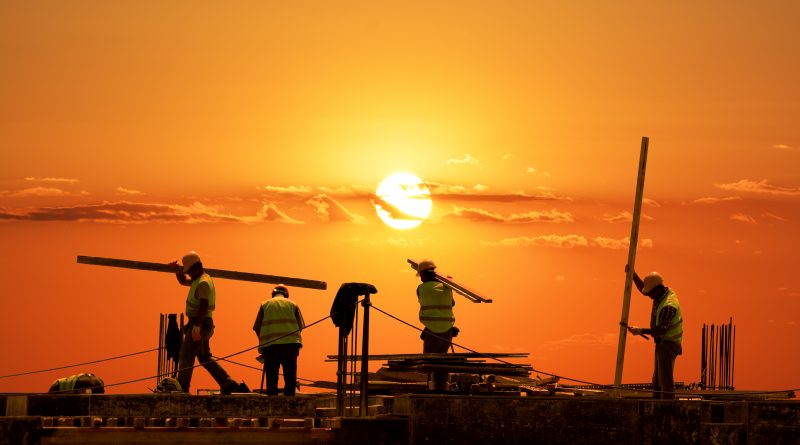Health and safety is more than a procedure
We all know that health and safety is important. But I see time and time again that businesses spend the money getting their health and safety arrangements documented, but then these arrangements just sit in a folder gathering dust. Implementing it is the most important part of all. But how can you easily take the ideas and make them happen?
For me, I couldn’t think of anything worse than not looking after employees. No matter what sort of business you run, there is no excuse for not having protection in place that ensures everyone in your employment is a safe as possible. And that’s all it needs to be: as safe as possible. Legislation asks that you do things “so far as is reasonably practicable.” But could you honestly say you’ve done enough?
If you want to improve the health and safety within your business then there are four stages that I recommend you go through. This will ensure you have a proactive health and safety process.
Stage One
The first stage is simple. All you need to do is identify the significant hazards within your business. This means physically walking around all your property, including areas like your car park, and spotting where potential problems might be. You need to include both the things we may easily be able to identify, such as how secure is the handrail. Are there holes in the wall or ceiling that might cause problems? Are there too many extensions in one socket, potholes in the outside space or a blockage near the fire door, through to things which may not be so obvious? This will include such things as the control of legionella for hot and cold water supply, control and management of maintenance contractors who you engage, or requirements to provide health surveillance for your employees. Also, how many of the substances used on your site have exposure limits listed in section 8 of the safety data sheet? Go around, look at everything, and be as honest as you can about what issues are there.
Stage Two
For each of the problems you find, you next need to establish whether you have a policy or procedure documented to cover that particular issue. Do you already know how you would manage or control the hazard? If yes, then you need to ensure that people know about it and know their roles, responsibilities and training. If you don’t and this is a new issue, then you need to document how you’re going to manage or control it, and then you need to assign a person to take charge of it.
Stage Three
Stage three is about implementation. Are you doing what the policy or procedure says? It’s a very common occurrence that people have a detailed policy that covers all eventualities, but they do nothing with it. It essentially becomes meaningless paperwork. If a hazard has been spotted then it should not just be left. What does the policy say about managing it and has it been implemented?
We need to do all we can to ensure the safety of people. Just ticking the box to say you have a procedure is actually a waste of money. Until all of the procedures are shared with responsible people and all actions have been taken, then you aren’t meeting your health and safety requirements. It can take time and it sometimes won’t be easy to do, but it’s very important that it’s done right.
It’s also important here to understand the difference between culture and climate.
- Culture is the perception and expectation of Senior Management/the Board as to what is happening and where you spend money on having your arrangements documented
- Climate is what is actually taking place
This is where the check element is extremely important. When was the last time as a senior manager or board member you took a copy of one of your risk assessments, policies or procedures and then identified from the document what should be taking place to ensure the climate is in line with the expected culture? Just because you have an expectation of the culture, it doesn’t mean it’s actually happening.
Stage Four
This stage is about evaluation. What actions can you implement to identify if something isn’t being done, or if improvements can be made?
The Health and Safety Executive (HSE) uses the Plan, Do, Check, Act model. This model is built around continuous improvement. It is accepted that a business may not be perfect, but it’s important that improvement is part of the culture of the business and it’s not deemed as acceptable to do nothing.
The Plan, Do, Check, Act model is a recognised system for managing health and safety within a business, and this simple system could really help you out. The elements stand for:
- Plan – Documenting of policies, procedures
- Do – Implement, advise staff, carry out training
- Check – That what is documented within your policy procedures is being followed, or if there are areas for improvement or development
- Act – From the findings from checking, review plan section, document changes and implement through the do section
Implementation
I find that most businesses have covered stage one. Often they will have hired a consultant if they don’t have an in-house Health & Safety Manager, and this person will review the hazards and then will provide a folder detailing the findings. This is then the end of the road for many businesses. Stages two and three – the implementing and checking – are never put into practice, let alone stage four.
There’s no reason that many businesses can’t manage health and safety themselves on a day-to-day basis. Although some areas may need specialist competent advise, such as legionella or a fire risk assessment. However, if you are retaining a consultant, make sure you ask them how they will ensure all four stages will be implemented.
In addition, policies should always be written as guidance in the tone, language and terminology of each individual business. If they’re written purposefully for a particular business, it makes them easier to implement and understand.
I often compare health and safety to HR. When do you read your HR policy? When someone is off sick, queries a holiday, wants to make a grievance or is facing disciplinary action? And that’s fine. The policy is there to help. But when it comes to health and safety, if something has happened, it’s normally too late by then. The policy won’t help you after someone has been injured. If you’re not proactive, you could be risking someone’s health. Is that what you want on your conscience?
Originally posted 2021-10-13 16:11:41.
- Health and safety is more than a procedure - January 16, 2026
- How recruitment can boost productivity - November 10, 2025
- Lockdown doesn’t mean no health and safety - July 24, 2025






